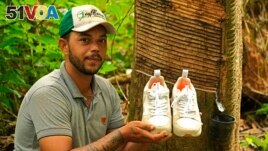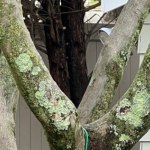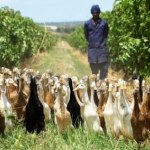25 January 2023
Veja shoes are sold at famous stores all over the world. The company that makes them is French. But the shoes are made in Brazil.
Over the last 20 years, Veja has sold more than 8 million pairs of shoes.
The company uses rubber from trees that come from Brazil's Amazon rainforest. The shoes are put together by workers in cities who are paid more than most factory workers.

Rubber tapper Rogerio Mendes shows off his Veja sneakers, received as a prize for his work as a young rubber extractor in the Chico Mendes Extractive Reserve, Acre state, Brazil, Wednesday, Dec. 7, 2022. (AP Photo/Eraldo Peres)
The company needs a lot of rubber. Unlike some businesses that need rubber, Veja pays extra and asks the people to carefully, or sustainably, harvest the rubber.
Collecting the rubber in this way permits the trees to keep growing and producing rubber. The workers who harvest the rubber are known as "tappers."
Rubber was once a product that was important to the Brazilian economy. But over the last 100 years its importance has declined along with the price of rubber.
Some Asian countries planted rubber trees many years ago. About 100 years ago, they started selling rubber into the world market. Rubber prices sank because of the large Asian supply.
During World War II, Japan removed its rubber from the market. That is the last time Brazilian rubber returned high prices.
By the 1970s, some Brazilian landowners started selling the parts of the forest with a lot of rubber trees. Farmers who raise cows are called cattle ranchers. The ranchers wanted to remove the trees and bring in cows.
Over time, the rainforest got smaller and smaller.
Some rubber tappers protested the change. They said ranchers were illegally cutting down rubber tress. The conflict became violent. The tappers' leader, environmentalist Chico Mendes, was murdered in 1988 for pushing back against the cattle farmers.
After Mendes' death, Brazil's government created areas where rubber trees would be protected. The forest in these areas could not be sold to make way for cattle. This meant rubber tappers were able to continue their work. The Chico Mendes reserve is one of these areas.
Raimundo Mendes is 77 years old. He has worked his whole life as a rubber tapper. His 24-year-old son Rogerio is also a rubber tapper. They both collect rubber that Veja uses for its shoes. In 2022, they were paid over $4 per kilogram for their rubber. That is 10 times more than they earned in the past.
Rogerio said Veja's money is making some young people return to tapping rubber. "They have rekindled the hope of working with rubber," he said.
Veja also pays extra money to groups of rubber farmers. These groups are known as cooperatives. The workers promise to take care of the trees and the environment. The workers in the cooperatives get paid money and also receive Veja shoes.
Veja's rubber comes from 1,200 families from 22 local cooperatives spread across five Brazilian states within the Amazon. The states are Amazonas, Rondonia, Mato Gross, Pará and Acre – home of the Chico Mendes reserve.
All the rubber goes to a factory, where it is refined so it can be used in the shoes. Later, it goes to a shoemaking factory where workers build the shoes out of cotton and leather and then add the rubber to the shoe bottoms.
Even with Veja's success, there are still problems with deforestation in the Amazon. Though it is protected by the government, the Chico Mendes reserve is getting smaller. Cattle ranching is still much more valuable to the economy in Acre state than growing rubber. Cattle makes up 57 percent of Acre's economy, while rubber makes up just 1 percent. That comes from a study by Minas Gerais Federal University.
Former Brazilian President Jair Bolsonaro supported cattle ranching over sustainable farming. About half the workers in the rural part of Acre are involved in cattle ranching.
Veja uses a special satellite system to keep watch of the Chico Mendes reserve. The company looks for illegal land clearing.
Sebastiao Perera works for Veja to look after the rubber supply. He said Veja will see the deforestation on the satellite images and go there to speak with the ranchers. All they can really do is "offer an alternative and raise awareness" about a different kind of work.
He added that the company knows "public authority should be doing the law enforcement."
I'm Dan Friedell.
Dan Friedell adapted this story for VOA Learning English based on a report by the Associated Press.
______
Words in This Story
pair –n. a set of two items
rekindle –v. a light a fire, or cause interest where there was none
refine –v. to process something and take out impurities so it can be used for something else
deforest –v. to cut down trees or clear land for other uses such as farming or ranching
alternative –n. something different
awareness –n. the state of paying attention to something
authority –n. a leadership figure or government












